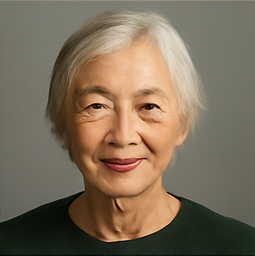Polio Cases Detected in Papua New Guinea: A Cause for Concern










2025-05-15T18:32:55Z
In a concerning development for public health in the Asia-Pacific region, officials from the World Health Organization (WHO) have announced the confirmation of two new cases of Poliovirus type 2 in Papua New Guinea (PNG). These cases were identified in children living approximately 500 kilometers northeast of Queensland's Cape York, prompting a 'national emergency response' from Australia’s closest international neighbor.
The WHO reported on Thursday that the outbreak was detected through wastewater samples collected from the city of Lae, as well as an environmental sample taken in the nation’s capital, Port Moresby. Worryingly, this outbreak is linked to strains of the virus that are currently circulating in Indonesia, posing a significant threat not only to PNG but also to surrounding nations, including Australia.
Subsequent testing carried out by the WHO, in collaboration with the PNG Department of Health, UNICEF, and local provincial health authorities, confirmed that the virus was present in two otherwise healthy children in Lae. Genetic sequencing of the virus indicated a direct link to polio strains originating from Indonesia. It is worth noting that wild Poliovirus type 2 was declared eradicated back in 1999, and type 3 followed suit in 2020. As of 2022, only two countries—Pakistan and Afghanistan—were still facing challenges with wild Poliovirus type 1. This raises an alarming question: how is it possible for a disease that had seemingly been eradicated in the Asia-Pacific region to resurface in 2025?
The WHO characterizes polio, or poliomyelitis, as a highly infectious viral disease that primarily affects children under the age of five. There is no known cure for this disease, and prevention is solely reliant on vaccination. The virus can spread from person to person, mainly through the inadvertent consumption of fecal matter infected with the virus, but it can also disseminate through contaminated food and water sources. The Australian Department of Health describes polio as a serious illness that can result in long-term disability, paralysis, or even death. Although most individuals who contract the virus manage to recover completely, a small percentage may suffer from permanent muscle and nerve damage.
Australia has not seen a major outbreak of polio since 1961 and was officially declared polio-free in 2000. According to the National Centre for Immunisation Research and Surveillance (NCIRS), as of 2022, around 93.9 percent of children aged one had received three doses of the polio vaccine. However, recent figures indicate a slight decline, as vaccination rates for one-year-old children have decreased since the peak of the COVID-19 pandemic. Fortunately, more than 95 percent of two-year-olds and nearly 94 percent of three-year-olds are still immunized against polio.
Australia maintains its own polio surveillance program, publicly funded to prepare for, monitor, and respond to potential threats from both domestic and international sources. This program is essential for detecting any cases of polio that may have been imported from other countries, thereby preventing local transmission and working closely with the WHO.
Despite the eradication of polio in PNG as of 2000, the country remains vulnerable due to low vaccination rates and inadequate health surveillance systems. A minor outbreak occurred in 2018, which was successfully controlled, but the current situation raises alarms about the potential for wider outbreaks. According to the WHO, only Afghanistan and Pakistan remain endemic for wild strains of polio, with another 20 nations successfully certified as polio-free, and 173 countries having eradicated the virus entirely.
Dr. Sevil Huseynova, a WHO representative in PNG, indicated that the latest outbreak can be largely attributed to low vaccination rates coupled with the virus’s high transmissibility. She emphasized that as these challenges mount, the risk of further vaccine-preventable disease outbreaks increases, complicating efforts to detect and respond to any new cases efficiently.
The WHO and UNICEF are mobilizing resources to counter this alarming situation, implementing widespread surveillance for any acute flaccid paralysis cases and launching a comprehensive three-stage immunization program aimed at increasing vaccination rates among children in PNG.
Linda Selvey, an honorary associate professor at the University of Queensland’s School of Public Health, discussed the implications of the outbreak during an interview on ABC radio. She assessed the risk of polio spreading to Australia as relatively low, primarily due to the comprehensive vaccination program in place for Australian children. However, she expressed concerns over the situation in PNG, where healthcare services are often inadequate.
Dr. Selvey noted that while there have not been any clinical cases of polio reported in PNG to date, the underreporting of cases is a significant concern. “It is quite possible that a child might contract polio without it being detected, increasing the risk of community spread,” she stated. Despite the potential risks posed by cross-border movement between Australia and PNG, Selvey reassured the public that Australia’s high immunization rates provide a robust defense against the virus.
Recent vaccination figures from the NCIRS indicated a worrying trend of declining childhood immunization rates since the onset of the COVID-19 pandemic. In 2024, only 91.6 percent of one-year-olds were fully vaccinated, down from 94.8 percent in 2020. For two-year-olds, the vaccination rate fell to 89.4 percent from 92 percent four years prior, while five-year-olds saw a drop from 94.8 percent in 2020 to 92.7 percent last year.
The Department of Foreign Affairs and Trade (DFAT) has expressed its commitment to supporting PNG in response to this health emergency. In a statement issued on Thursday, a DFAT spokesperson affirmed, “Australia is collaborating closely with the Papua New Guinea government, the WHO, and UNICEF to facilitate the immediate immunization response to the detection of vaccine-derived poliovirus.” This assistance is crucial for bolstering PNG's National Polio Response Plan and ensuring that necessary resources and technical support are provided in a timely manner.
 Hana Takahashi
Hana Takahashi
Source of the news: Australian Broadcasting Corporation